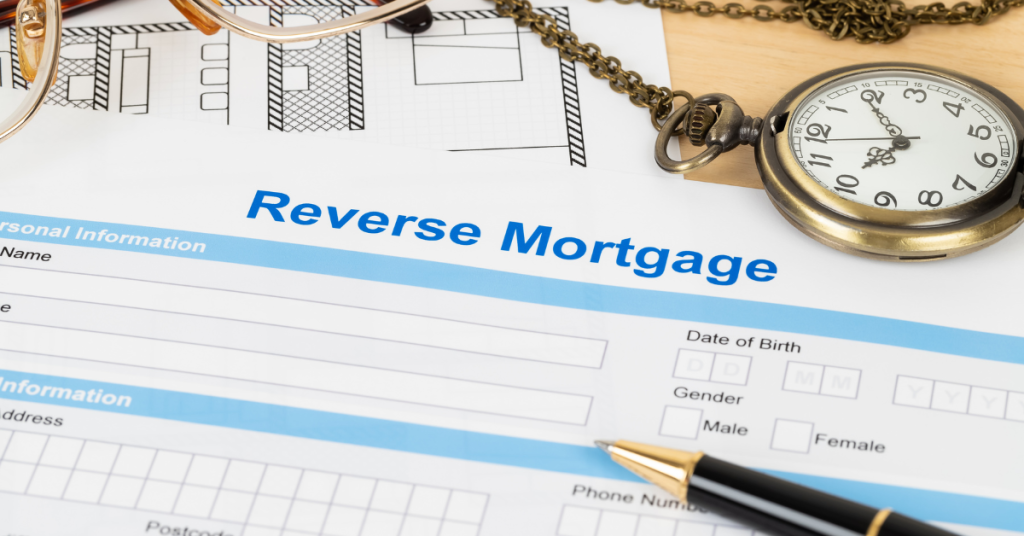When making financial decisions, choosing between a reverse mortgage and refinancing your home can often feel like being between a rock and a hard place. Both are potent tools wielding the power to transform your financial landscape, yet their application rests significantly on individual circumstances.
As we explore the intricacies of these two options, we are led to the looming question, ‘Which one is the right fit for you?’ Based on my in-depth understanding of financing, join me as we unravel these mortgage mechanisms, where every nook leads to a possibility – one where your financial freedom may be just a decision away.
What is Refinance?
Refinance (refi) involves replacing an existing mortgage with a new one. Refi, at its core, can be understood through the following benefits:
- Lower interest rates
- Shorter repayment terms
- The option of shifting from an adjustable-rate mortgage to a fixed-rate one.
While the option to refi is generally available to any homeowner, it’s undeniable that your eligibility for specific refinancing options will significantly depend on a good credit score to refinance a home.
While refinancing entails revising the terms of your existing mortgage, often with improved conditions, it’s not the only route a homeowner can take. One must also consider the purchase vs refinance option to make informed decisions.
Role of a Mortgage Lender in Refinancing

A mortgage lender plays an instrumental role in the refi process. Here are some critical aspects of the part of a lender in mortgage refinancing
- Evaluate the borrower’s eligibility and creditworthiness
- Determine the value of the refi property
- Set the terms for the new mortgage.
It’s pivotal for homeowners to have productive consultations with potential lenders to understand the pros and cons of different refi options fully.
Overview of Cash-out Refinance
A specific form of refi, known as cash-out refinance, allows borrowers to replace their current mortgage with a new one for a more significant loan amount, thereby taking the difference in cash. This option is often attractive to homeowners needing substantial funds for expenses such as:
- Home renovations
- College tuition
- Debt consolidation
Remember, though, the difference comes from the home’s equity, so evaluating the impact on the loan balance is crucial.
Pros and Cons of Refinancing
Refinancing offers an array of advantages and disadvantages. Here is a comparison in a table to understand it:
| Pros | Cons |
|---|---|
| Lower interest rates | Potential for higher cost |
| Predictable monthly payments | Closing costs and fees |
| Cash-out option | Possible loss of home equity |
Remember, evaluating the average closing costs for a refinance is essential. Explore different options to ensure you make a financially sound decision.
Understanding Reverse Mortgages

Reverse loans are like traditional mortgages. They allow elderly homeowners who must be 62 to convert their home equity into cash income with no monthly mortgage payments. The loan balance is only due once the borrower leaves the home or dies.
A borrower in this process, typically a senior citizen, can receive funds in a lump sum, regular payments, or a combination of both.
However, lenders offering the service charge expenses such as origination fees and insurance premiums. They also set the interest rate, which accrues over the loan’s lifetime and gets added to the loan balance leading to a decrease in home equity.
Pros and Cons of Reverse Mortgages
This process offers many benefits for seniors, allowing them to convert their home equity into a steady income stream without the burden of monthly loan payments. However, it’s essential to weigh the pros and cons of this financial product before deciding.
Pros
- No Monthly Loan Payments: The most significant advantage is that they don’t require monthly loan payments. As a result, homeowners can improve their immediate cash flow.
- Financial Flexibility: It offers a great deal of financial flexibility. They can be received in a lump sum, in regular monthly payments, or simply as a line of credit.
- Protection against Falling House Prices: Even if the house’s value decreases, you would never owe more than the home’s value. This offers a unique financial safety net.
Cons
- Accumulating Interest: Like any loan, reverse loans earn interest. The longer the loan period, the more the unpaid interest compounds and adds to the loan balance.
- Fees and Closing Costs: Originating a reverse loan typically involves several associated fees and closing costs. It’s crucial to consult with a financial advisor to ensure you’re aware of all the costs involved.
- Potential Impact on Means-Tested Benefits: A reverse mortgage can impact any means-tested benefits, such as Medicaid. It’s always important to consult a financial advisor to understand the implications before deciding.
The Difference Between Reverse Mortgage and Refinance
While these two loan options involve the home’s equity, their function can diverge significantly. Here is a table comparing the differences:
| Reverse Mortgage | Refinance | |
|---|---|---|
| Definition | A loan for homeowners aged 62 and above | Substitution of the existing mortgage with a new one |
| Repayment | No monthly payments are required | Regular payments are required monthly |
| Usage of Funds | Funds can be used for any purpose without any restrictions | Homeowners can free up cash by tapping into their home’s equity |
| Interest | Interest accumulates over the life of the loan | Interest is paid monthly |
| Impact on Home Equity | Reduces home equity over time | Can potentially increase or decrease home equity |
When opting for either of the two options, it’s essential to scrutinize the terms of the new loan. Consideration includes the interest rate, monthly mortgage payments, the impact on home equity, and the mortgage insurance requirement.
Using Refinance for Home Improvement

Refinancing, particularly cash-out refi, can be an excellent way to fund significant home improvements. The lump sum from the process can be directed to large-scale renovations, shaping your house into your dream home.
However, this will be based on the interest rate and your refi term length. If you need a substantial sum, consider a cash-out refinance. This option lets you access more equity in a lump sum plus your remaining original loan balance.
Which Option is Right for You?
Whether it’s a refi or reverse loan, your choice largely depends on your financial situation, age, current mortgage terms, and long-term goals. Also, such decisions should be based on a detailed analysis of the rates, payments, fees, and mortgage insurance requirements.
Refinancing may benefit homeowners eyeing lower interest rates or shorter mortgage terms. Elderly homeowners seeking additional income may view reverse loans as a financially liberating option.
While these two options provide unique benefits, they have distinct risks and downsides. As such, weighing the potential rewards against the drawbacks is advisable before deciding between a refi or a reverse mortgage.
With a solid background in refinancing, I can attest that obtaining quotes from different lenders, discussing comprehensively with mortgage professionals, and seeking financial advice is essential. Taking your time and making informed decisions helps to strike the right balance between your current needs and long-term financial health.
Frequently Asked Questions About Reverse Mortgage vs Refinance
Is a refinance the same as a reverse mortgage?
No, these two loan options are not the same. A refi involves replacing your current home loan with a new one, usually with better terms or to access equity in your home. On the other hand, its counterpart is a type of loan for seniors allowing them to convert part of the equity in their home into cash without having to sell their home.
What is one disadvantage of a reverse mortgage?
One significant disadvantage of this loan option is the accumulation of interest over time. The interest is typically higher than other loans and accumulates over the length of the loan. This means the total amount to be repaid can grow significantly over time, mainly if you live in the home for many years after taking the mortgage.
What are the three types of reverse mortgages?
The three types of reverse loans are single-purpose, federally insured, and proprietary. Single-purpose mortgage loans are offered by some state and local government agencies and non-profit organizations; federally insured, also known as Home Equity Conversion Mortgages (HECMs), are backed by the U. S. Department of Housing and Urban Development (HUD). Proprietary mortgages are private loans backed by the companies developing them.






